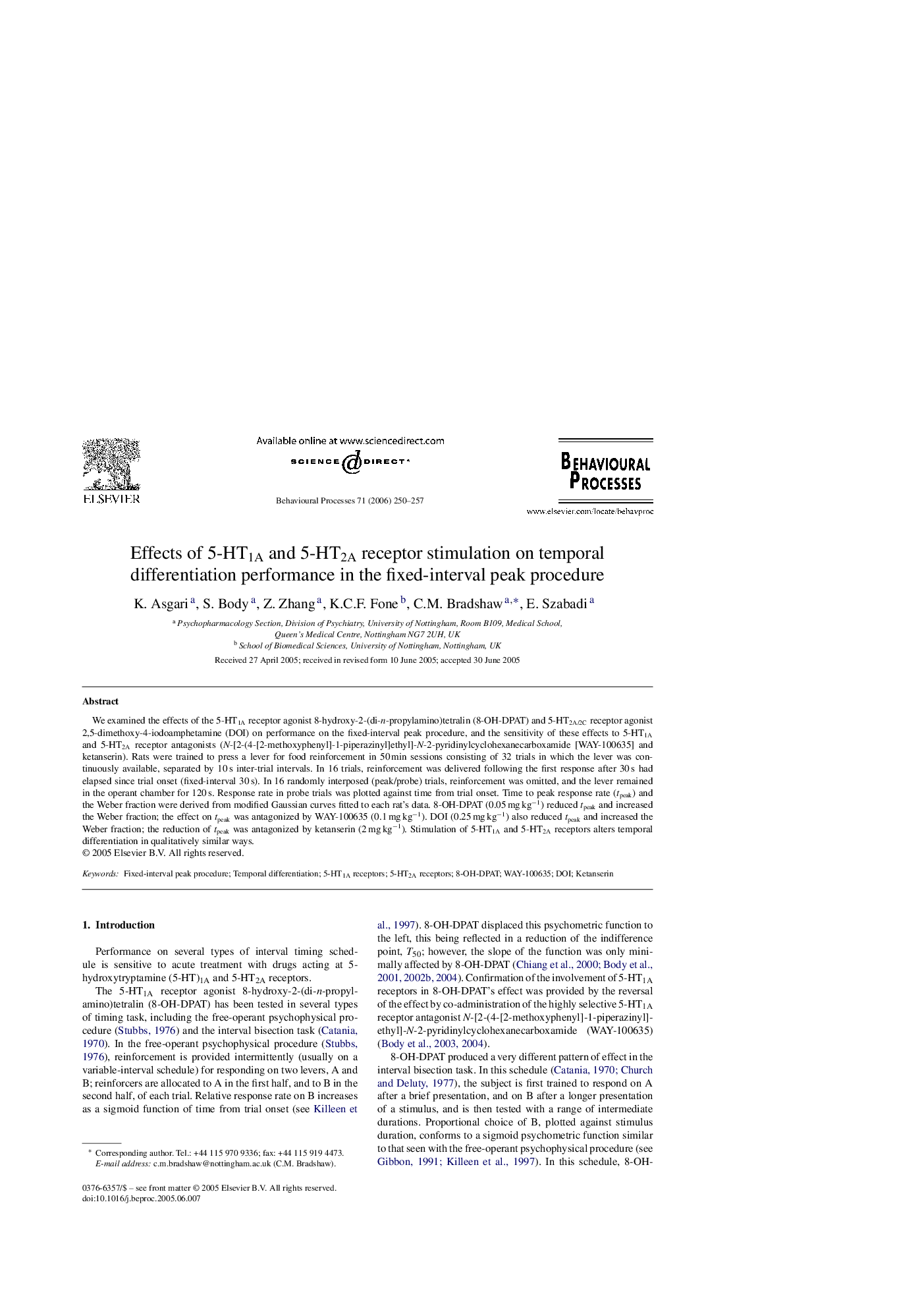| Article ID | Journal | Published Year | Pages | File Type |
|---|---|---|---|---|
| 2427883 | Behavioural Processes | 2006 | 8 Pages |
We examined the effects of the 5-HT1A receptor agonist 8-hydroxy-2-(di-n-propylamino)tetralin (8-OH-DPAT) and 5-HT2A/2C receptor agonist 2,5-dimethoxy-4-iodoamphetamine (DOI) on performance on the fixed-interval peak procedure, and the sensitivity of these effects to 5-HT1A and 5-HT2A receptor antagonists (N-[2-(4-[2-methoxyphenyl]-1-piperazinyl]ethyl]-N-2-pyridinylcyclohexanecarboxamide [WAY-100635] and ketanserin). Rats were trained to press a lever for food reinforcement in 50 min sessions consisting of 32 trials in which the lever was continuously available, separated by 10 s inter-trial intervals. In 16 trials, reinforcement was delivered following the first response after 30 s had elapsed since trial onset (fixed-interval 30 s). In 16 randomly interposed (peak/probe) trials, reinforcement was omitted, and the lever remained in the operant chamber for 120 s. Response rate in probe trials was plotted against time from trial onset. Time to peak response rate (tpeak) and the Weber fraction were derived from modified Gaussian curves fitted to each rat's data. 8-OH-DPAT (0.05 mg kg−1) reduced tpeak and increased the Weber fraction; the effect on tpeak was antagonized by WAY-100635 (0.1 mg kg−1). DOI (0.25 mg kg−1) also reduced tpeak and increased the Weber fraction; the reduction of tpeak was antagonized by ketanserin (2 mg kg−1). Stimulation of 5-HT1A and 5-HT2A receptors alters temporal differentiation in qualitatively similar ways.
